Making the right sunscreen choice
There are so many choices when you’re buying sunscreen. You can opt for sprays or lotions with a range of SPF numbers. Some are water resistant and they come in a range of prices with all sorts of ingredients. There’s a perfect sunscreen for every skin type, but how do you know you bought the right one for you? Dermatologists weigh in with a dozen signs that you made an iffy sunscreen choice.
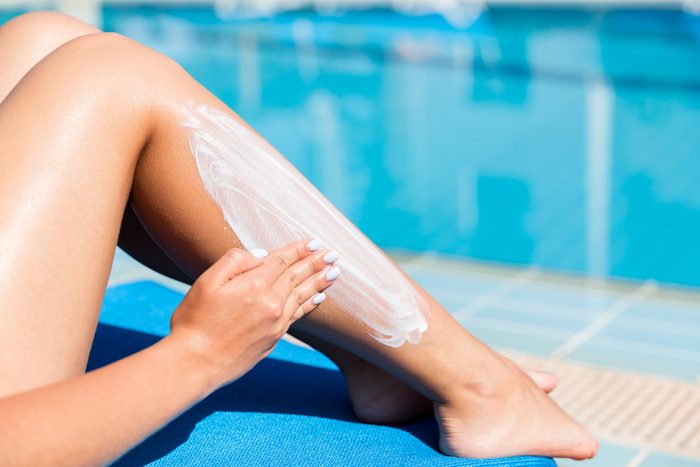
The SPF is lower than 30
With sunscreen, the number matters. “An SPF less than 30 doesn’t afford you the level of sun protection that you need,” says Deanne Mraz Robinson, MD, FAAD, and president and co-founder of Modern Dermatology. Higher is also important because you’re unlikely to apply the sunscreen thoroughly enough to reach full protection. “The average person applies 25 to 50 percent of the recommended amount of sunscreen,” says Adrienne Haughton, MD, director of clinical and cosmetic dermatologist at Stony Brook Medicine at Commack in New York. “In one study, patients applying what they perceived as an adequate amount of sunscreen labeled SPF of 70 and 100 provided an actual SPF of 19 and 27 percent respectively.”
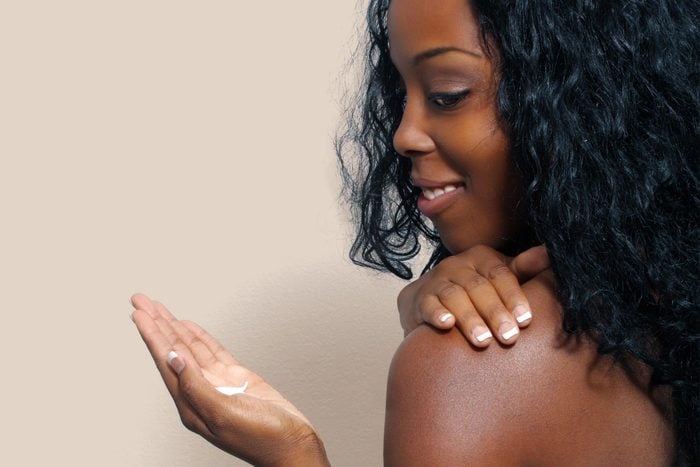
It’s a combination product
If you think you’ll save time by applying a combo product with sunscreen and bug repellent or sunscreen and moisturizing lotion, you may be doing more harm than good. “Insect repellent should not be applied as often as sunscreen,” says Hari Nadiminti, MD, chairman of dermatology at Summit Medical Group and Mohs micrographic surgeon at Summit Medical Group MD Anderson Cancer Center in New Jersey. Use separate products for each. (Here are 10 more sunscreen myths that make dermatologists cringe.)
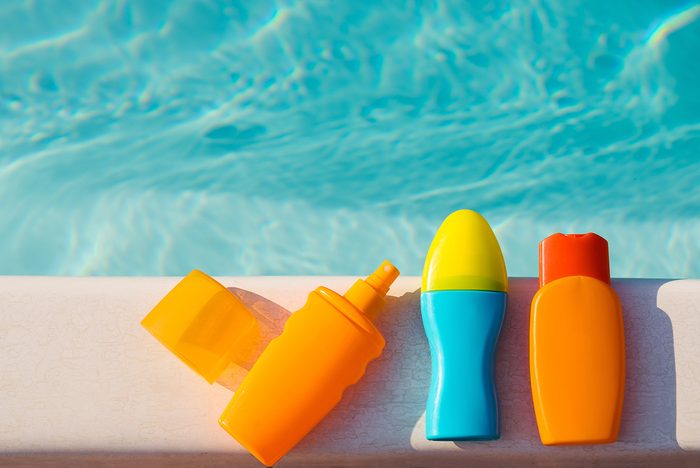
It contains the wrong ingredients
Read labels carefully. “Many chemical sunscreens contain avobenzone that is photounstable and becomes less effective upon sun exposure,” says Kristina Goldenberg, MD, of Goldenberg Dermatology in New York City. “It has to be combined with photostabilizing agents,” like cyclooctatetraene, para-nitrobenzyl alcohol, and Trolox. Or skip the chemical sunscreens and opt for a physical sun block with zinc oxide or titanium dioxide. “These ingredients are most effective in protecting us from harmful rays,” she says. However, physical sunscreens are easily wiped away with a towel or hand, so reapplying regularly is key.

It promises “waterproof” coverage
“Sunscreens are no longer allowed to claim that they are ‘waterproof’ but instead, they state water resistance for a period of time, like 40 or 80 minutes,” Dr. Robinson says. “Match your sunscreen to your activity level and particular needs in terms of water resistance.” Keep in mind, even water-resistant sunscreens have to be reapplied every one to two hours. (Start here to find the best sunscreen for every activity.)
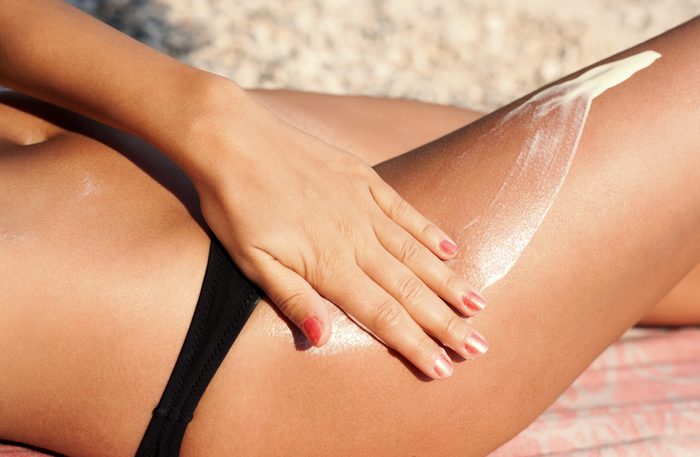
It doesn’t offer “broad spectrum” coverage
Ultraviolet-B (UVB) rays, which cause sunburns, are blocked by basic sunscreen, but if the sunscreen’s label doesn’t say broad spectrum, it will not block ultraviolet-A (UVA) rays, which are responsible for skin cancer and premature skin aging. You need all-day protection against both, and Dr. Robinson says the only way to get that is by using sunscreen labeled “broad-spectrum coverage.” (Be sure to brush up on the sunscreen dos and don’ts everyone should know before summer.)
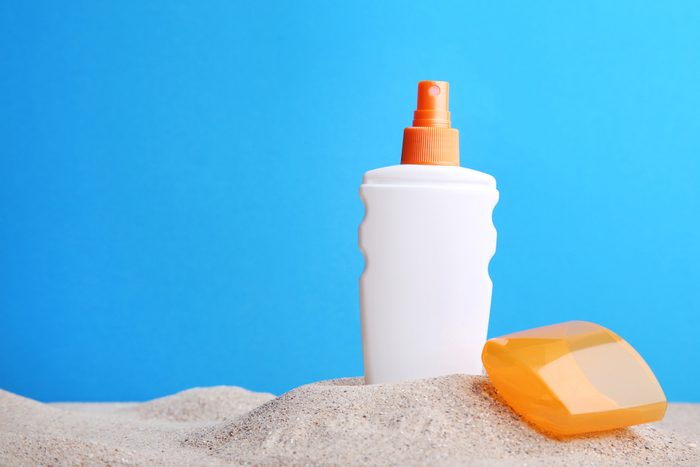
It’s in a spray bottle
A sunscreen is only effective when applied correctly and, unfortunately, sprays leave a lot of room for error. To make sure you’re using a spray sunblock correctly, follow these tips from Tsippora Shainhouse, MD, FAAD, a board-certified dermatologist in Los Angeles and a clinical instructor at the University of Southern California. Hold the bottle two to three inches from your body and spray a stream onto the skin. Rub it into your skin, then apply a second layer to make sure you didn’t miss any spots. If you’re applying it outdoors, find a spot that’s not windy before spraying; otherwise, the sunblock may blow away before even reaching your body. Alternatively, you can spray it into your hand and apply directly to your skin.
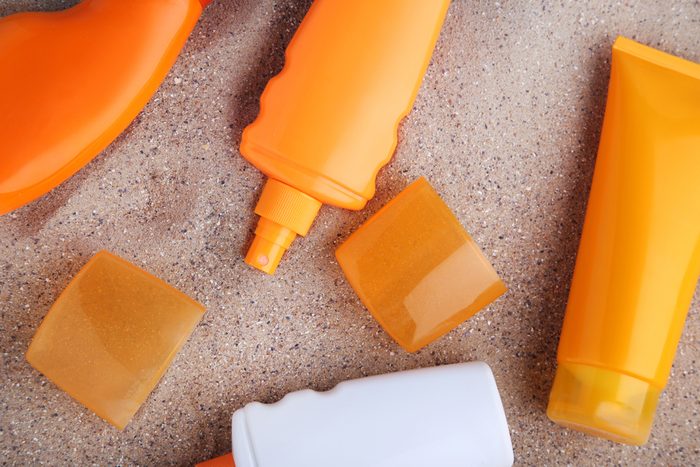
It’s stored in the sun or heat
If you pop into a store and find sunscreen sitting in the window in the sun’s rays, keep looking. Likewise, if you stored last year’s bottle in a hot garage or glove box, it’s time for a new bottle. “When stored at high temperatures, sunscreen can break down and become less effective,” says Sejal Shah, MD, a board certified dermatologist. (Look out for these 7 other sunscreen mistakes you don’t realize you’re making.)
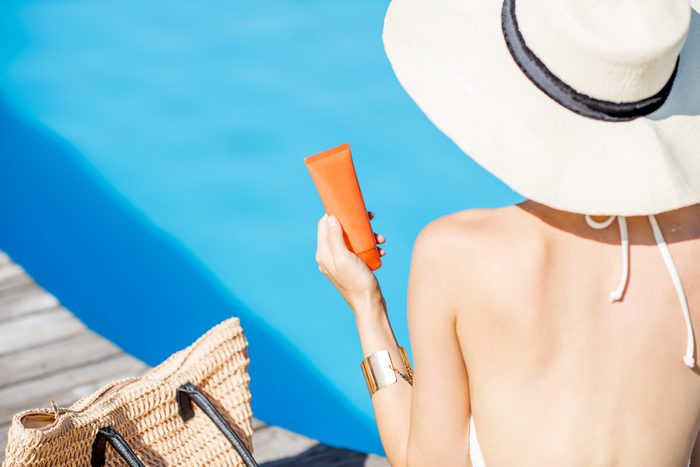
It looks or smells funny
If your eyes—or your nose—tell you something isn’t right, trust that instinct; old sunscreen will look and smell unusual. When in doubt, throw it out.
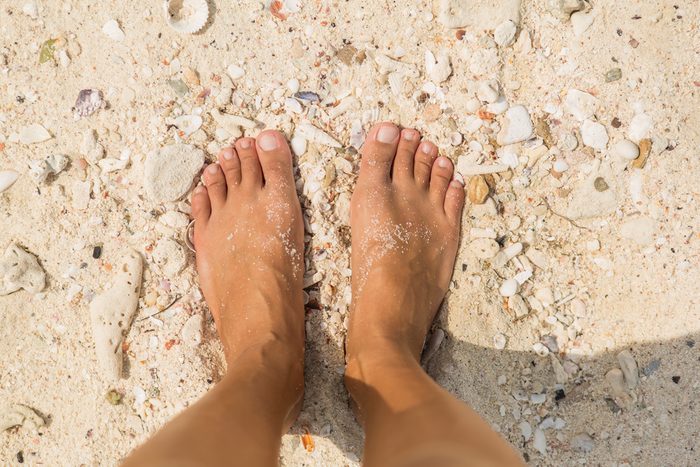
Your skin begins to burn
If the visual or physical cues are telling you your sunscreen isn’t working, get to the shade—and fast. “If you notice your skin is burning, regardless of however you applied the cream, you should get out of the sun,” says Michelle Pipitone, MD, a dermatologist at Northwestern Medicine Regional Medical Group. “Some medications can make skin more photosensitive. It’s also possible you missed areas of the skin, or the cream rubbed off, such as the ears, eyelids, tops of the feet, or around edges of the bathing suit.”
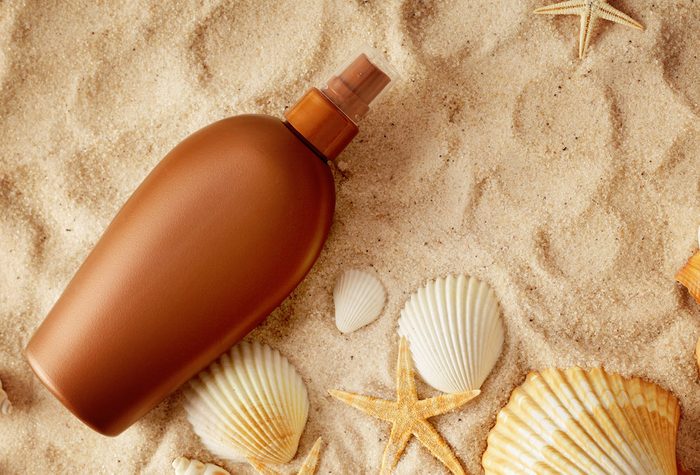
Skip the tanning oils
Popular tanning oils promote faster tanning, but Dr. Shainhouse says they’re not worth your money. “Tanning oils will attract sun and increase the potential for sun tans, sunburns, and skin damage, even if they claim to contain some degree of sunscreen,” says Dr. Shainhouse.
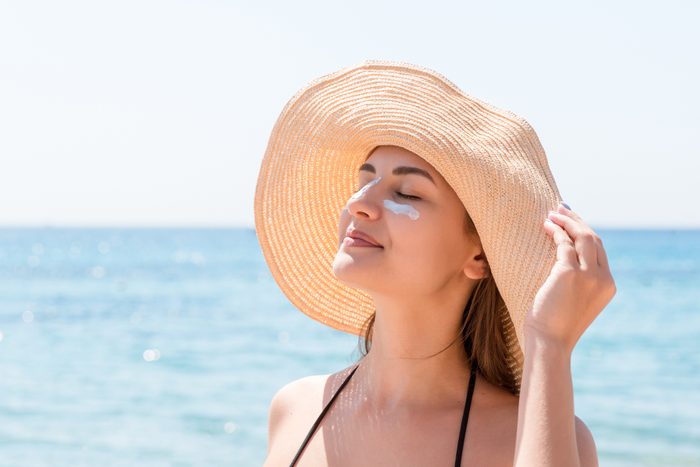
Save your sunscreen bucks for your face
The price of a sunscreen rarely tells you how good it is, and some inexpensive brands, like Blue Lizard and Coppertone, are highly recommended by dermatologists. “Cheaper sunscreen isn’t bad if used by individuals without acne or allergic tendencies,” says Jeanie Downie, MD, contributing medical expert to Zwivel.com. “I recommend patients use a cheaper product like a spray or lotion on their trunks and extremities.”
When it comes to your face, however, a splurge may be in order. “When you use a more comfortable product on the face that feels good going on and absorbs quickly, it will increase your likelihood of using it more frequently.” Look for a lightly tinted one, like Skinceuticals Physical Fusion Defense SPF 50, that absorbs quickly and does double-duty as a primer for your makeup.
Next, check out these 13 sunscreens dermatologists use on themselves.
